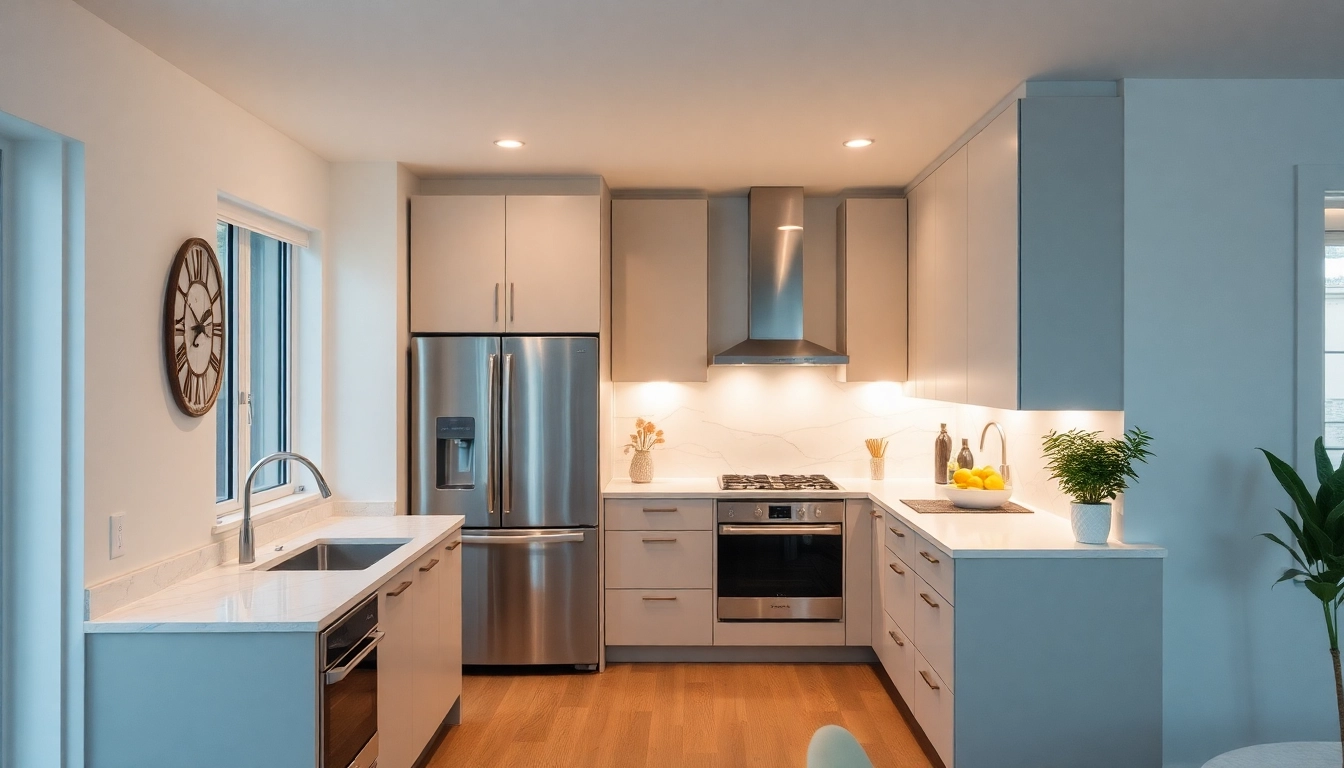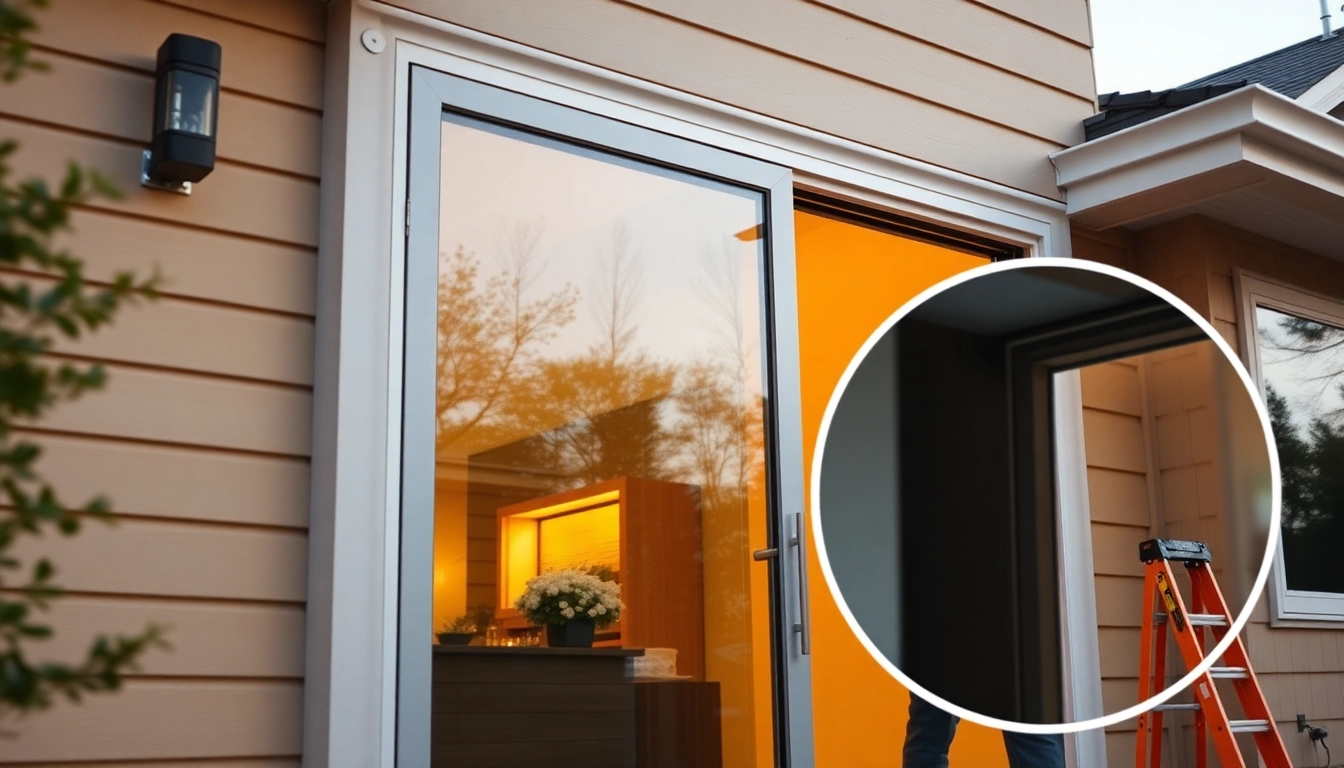Understanding Remodeling: Definition and Key Concepts
Remodeling has become a pivotal aspect of home improvement, allowing homeowners to transform their living spaces into more functional, aesthetic, and valuable environments. But what exactly does remodeling entail? At its core, remodeling involves the process of changing or altering the structure, style, or function of a space, often to meet new needs, update design themes, or improve overall property value. Unlike simple cosmetic upgrades, remodeling often encompasses significant structural modifications, requiring careful planning and expert execution.
If you’re considering a remodeling project, it’s essential to understand its scope and impact. The process can range from minor upgrades like replacing fixtures or updating paint to major transformations such as relocating walls, adding extensions, or entirely reconfiguring a home’s layout. Engaging in remodeling allows for customization tailored to your lifestyle, technological advancements, or energy efficiency goals. To explore how professional remodeling can elevate your home’s appeal and functionality, review trusted service providers like Remodeling experts.
What Does Remodeling Mean in Home Improvement?
In the context of home improvement, remodeling signifies a comprehensive change to the existing structure or appearance of a property. It’s a process that often involves both aesthetic enhancements and functional upgrades to meet evolving lifestyles or preferences. Remodeling projects may include renovating kitchens, bathrooms, basements, or entire floor plans—altering layouts, materials, and accessories to create a new atmosphere or better fit a homeowner’s needs. It’s a strategic approach to rejuvenate a property by making deliberate changes that add both comfort and value.
Compared to simple renovation work that typically focuses on superficial cosmetic improvements, remodeling can involve extensive demolition, reconstruction, and reconfiguration. It might require permits, structural assessments, and adherence to local building codes, emphasizing the importance of working with experienced professionals. The ultimate goal of remodeling is to craft a space that aligns perfectly with the homeowner’s vision while ensuring safety, durability, and efficiency.
Difference Between Renovating and Remodeling
Understanding the distinction between renovating and remodeling is crucial in planning your project. Renovation pertains to cosmetic or superficial changes aimed at restoring or updating a space without altering its fundamental layout. Examples include repainting walls, replacing fixtures, or refinishing surfaces. Renovations enhance aesthetic appeal and may improve usability but generally do not involve structural modifications.
In contrast, remodeling involves more extensive changes, often transforming the very structure or layout of a space. It could include removing or adding walls, expanding rooms, altering windows and doors, or reconfiguring systems like plumbing or electrical wiring. Remodeling projects are typically more complex, costly, and time-consuming but yield transformative results that significantly boost a home’s functionality and value.
Both approaches can significantly increase a home’s worth, but remodeling provides a more comprehensive upgrade when structural change is desired. Knowing when to renovate versus remodel helps in setting realistic expectations, budgeting accurately, and hiring the right professionals for the task.
Common Types of Remodeling Projects
Remodeling projects span a broad spectrum, each with specific considerations and benefits. Here are some of the most common types:
- Kitchen Remodeling: Enhances one of the most actively used spaces, focusing on cabinets, countertops, appliances, lighting, and layout to improve both functionality and style.
- Bathroom Remodeling: Updates fixtures, vanities, tiles, and layouts to increase comfort, efficiency, and visual appeal.
- Basement Finishing: Transforms underutilized spaces into living areas, entertainment rooms, or home offices, adding usable square footage and value.
- Whole-House Renovation: Comprehensive updates that involve restructuring, modernizing, and improving multiple areas simultaneously for a seamless transformation.
- Adding Extensions: Expanding existing living spaces through room additions, second-story builds, or porch enclosures to accommodate growing families or new lifestyles.
Each project type requires tailored planning, design, and execution strategies to achieve optimal results.
Planning Your Remodeling Project for Success
Setting Clear Goals and Budget
Effective remodeling begins with defining clear, realistic objectives. Are you seeking to improve daily usability, increase property value, or create a specific aesthetic? Establishing these goals helps prioritize features, materials, and scope. Concurrently, setting a comprehensive budget is essential. This should include direct costs like labor, materials, permits, and contingency funds for unforeseen issues. A well-structured budget aligns expectations with financial reality and prevents overspending.
Proactively comparing estimates from multiple reputable contractors, understanding local market rates, and allocating 10-20% extra for unexpected expenses will help stabilize your financial planning. Remember, a successful remodeling project balances quality, cost, and timeline.
Designing a Functional and Aesthetic Layout
Creative and practical design is the cornerstone of a successful remodel. Collaborate with experienced designers or architects to develop layouts that optimize space utilization, flow, and lighting. Consider current trends, your lifestyle needs, and future flexibility—such as adaptable workspaces or aging-in-place features.
Visual tools like 3D renderings can aid in decision-making, while comprehensive plans ensure clarity during construction. Pay attention to ergonomic details, traffic patterns, and storage solutions. Striking the right balance between style and function elevates your home’s appeal and usability.
Selecting the Right Contractors and Materials
Choosing qualified, licensed contractors is critical to project success. Look for contractors with a proven track record, positive client reviews, and proper insurance. Local expertise can be advantageous, especially concerning permit acquisition and familiarity with regional building codes.
Material selection impacts durability, aesthetic consistency, and overall project costs. Opt for high-quality, sustainable options when possible, and ensure compatibility with existing structures. Partnering with professionals ensures that design ambitions meet practical constraints, delivering enduring results.
Best Practices for a Seamless Remodeling Experience
Permitting and Regulatory Compliance
Adhering to local building codes and obtaining necessary permits are fundamental steps in remodeling. These regulations ensure safety, zoning adherence, and environmental standards. Working with experienced contractors simplifies the permitting process, as they are familiar with regional requirements.
Failure to secure proper documentation can lead to costly delays or legal issues. Always verify permit status before commencing work and keep detailed records throughout the project for future reference or resale.
Timeline Management and Workflow Optimization
A detailed, realistic timeline keeps the project on track. Break down each phase—design, demolition, construction, inspections—and establish milestones. Regular communication between homeowners and contractors facilitates proactive problem-solving and adjustments.
Implementing project management tools or software can increase transparency and accountability, reducing downtime and preventing scope creep. Proper scheduling ensures timely completion within budget.
Ensuring Quality and Safety Standards
High standards of craftsmanship enhance the longevity and aesthetic of your remodel. Include quality control inspections at key phases to identify issues early. Use certified products and follow industry best practices for safety, especially when working with electrical, plumbing, or structural modifications.
Maintaining a safe worksite protects both workers and residents. Clear safety protocols and appropriate equipment are non-negotiable components of professional remodeling.
Innovative Trends and Ideas in Remodeling
Sustainable and Eco-Friendly Materials
Modern remodeling increasingly emphasizes sustainability. Materials like bamboo flooring, reclaimed wood, low-VOC paints, and recycled countertops reduce environmental impact. Energy-efficient windows, insulation, and appliances further decrease operational costs and carbon footprint.
Choosing eco-friendly options not only benefits the planet but also appeals to environmentally conscious buyers, boosting home value.
Smart Home Technologies Integration
Integrating smart technologies enhances convenience, security, and energy efficiency. Automated lighting, thermostats, security cameras, and voice-controlled systems can be embedded seamlessly during remodeling, creating a connected and modern home environment.
Planning for future technological upgrades during the initial design stage ensures compatibility and simplifies installation.
Modern Design Aesthetics and Customization
Contemporary remodeling trends favor clean lines, minimalist aesthetics, and multifunctional spaces. Custom features like bespoke cabinetry, statement lighting, and innovative storage solutions personalize your home.
Utilizing the latest design software and high-quality finishes ensures your remodeling reflects current styles while remaining timeless. Flexibility and personalization are key in current popular designs.
Measuring Success and Maximizing Investment
Evaluating Project Outcomes and Satisfaction
Post-completion, assess whether the remodel meets your initial goals. Conduct walkthroughs, inspect for defects, and verify functionalities. Gathering feedback from family members and visitors can provide insights into usability and aesthetic appeal.
Document lessons learned for future projects, and maintain detailed records for warranty purposes and resale documentation.
Boosting Home Value Through Remodeling
Strategic remodeling enhances property value, often recouping a significant portion of costs at resale. Kitchen and bathroom upgrades typically yield high ROI, followed by improvements like additional bedrooms or upgraded flooring.
Prioritize projects that align with current market trends and neighborhood standards to maximize return on investment.
Maintaining and Upkeeping Your Remodel
Regular maintenance preserves the integrity and appearance of your remodel. Schedule routine inspections of roofing, plumbing, electrical systems, and finishes. Promptly address any issues to prevent deterioration.
Long-term upkeep ensures your investment sustains its value, functionality, and aesthetic appeal for years to come.

